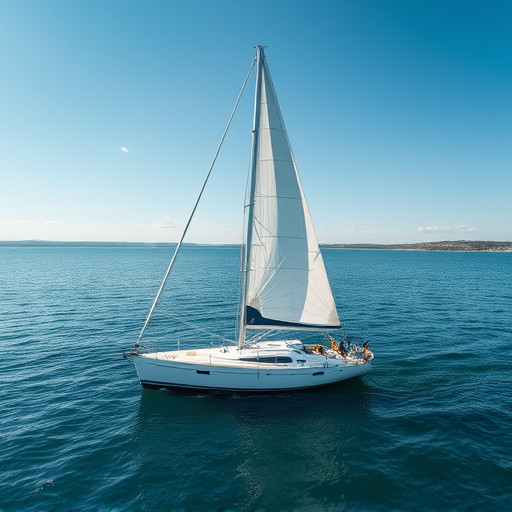Sailing Fundamentals:
Sailboats are designed to harness wind power using various fabric sails (mainsails, jibs, spinnakers) optimized for different wind conditions. Effective operation requires crew skills in sail adjustment (tacking, jibing), boat control (steering, rigging management), and understanding fluid dynamics principles. Mastering these leads to a rewarding sailing experience that combines challenge and elegance. Key boat components include the hull (for buoyancy), mast, rigging, rudder, and deck.
Sailboats have captivated adventurers and sailors for centuries, offering a unique way to explore the open waters. This article delves into the fascinating world of sail power, from understanding the fundamentals of sailboat operation to exploring diverse vessel types and preparing for exhilarating sailing journeys. We’ll unravel the science behind sails, their role in harnessing wind energy, and the essential terminology every sailor should know. Additionally, we’ll compare monohull and multihull designs, showcase various sailboat categories, and provide insights into planning and executing memorable sailing adventures, ensuring a safe and enriching experience.
- Understanding the Basics of Sailboat Operation
- – Definition and key components of a sailboat
- – How sails capture wind energy
Understanding the Basics of Sailboat Operation

Understanding the basics of sailboat operation is crucial for anyone interested in navigating these elegant vessels. At its core, a sailboat harnesses the power of wind to propel itself through water using sails, which are large fabric panels designed to capture and convert wind energy into forward motion. The primary types of sails include mainsails, jib sails, and spinnakers, each optimized for specific wind conditions and maneuvers.
The crew plays a vital role in operating a sailboat effectively by adjusting the sails based on wind direction and strength. This involves skills like tacking (changing course through the wind) and jibing (changing tack when close-hauled). Additionally, understanding boat control, including steering and managing the rigging, is essential for navigating safely and comfortably, making sailboats both challenging to master yet immensely rewarding to operate.
– Definition and key components of a sailboat

A sailboat is a vessel designed to harness the power of wind for propulsion, using one or more sails. It’s a marvel of marine engineering, combining principles of fluid dynamics, physics, and navigation. The key components of a sailboat include the hull, which provides buoyancy and stability; the mast, a tall structure that supports the sails; and the rigging, the system of ropes, wires, and stays that control the position and shape of the sails. Other vital parts are the steering mechanism, usually a rudder, and the deck, where sailors operate and live during their voyages.
The hull’s design plays a crucial role in determining the sailboat’s performance. Different shapes and sizes of hulls are suited to various sailing conditions and purposes—from sleek racing yachts to rugged cargo ships. Sails themselves come in diverse types, each optimized for specific wind conditions and maneuvers. Together, these components enable sailboats to navigate smoothly through oceans and rivers, offering a unique blend of efficiency, elegance, and adventure that has captivated sailors for centuries.
– How sails capture wind energy

Sails are designed to capture and harness the power of the wind, enabling sailboats to glide through the water without relying on traditional engines. The fundamental principle behind this process is simple yet ingenious. As the wind blows against the sails, it creates a force known as lift. This occurs because air moving over the curved surface of a sail (typically shaped like an airfoil) travels faster than the air beneath it, resulting in lower pressure above and higher pressure below. This pressure differential generates a force that pushes the sail and the boat forward.
The unique part is how this force can be redirected through the boom (a horizontal pole attached to the sail) and into the direction of the desired motion. By adjusting the sails’ position and angle relative to the wind, sailors can navigate their boats efficiently. This art of sailing involves constant adjustments to capture the most optimal amount of wind energy, ensuring a smooth and controlled journey on the water.
